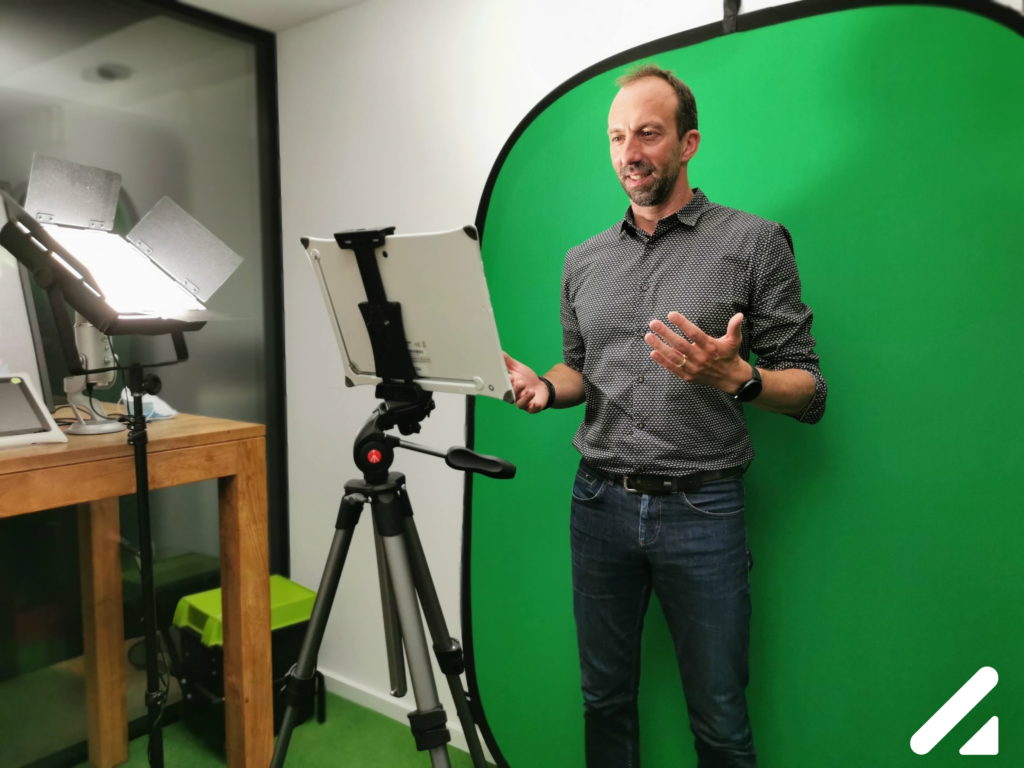Boost the efficiency of your remote training in 5 steps!
« The health crisis we’re experiencing has transformed our teaching practices: remote training is now part and parcel of our pedagogical approaches, and the good news is that both trainers and learners are getting a taste for it!
We must, however, remain careful to ensure we don’t overdo what we call zoomification (or teamsification).
Carrying out remote training is not, in fact, about digitizing modules but, more than ever, about making them interactive, participatory and lively. » Frédérick Ballan De Ballensée, Head of Professionalization and Campus Management at Armatis.

How do I deliver remote training successfully?
1- Adapt to the mixed nature of your audience
Today’s business world comprises a mix of generations with different expectations and a more or less innate apprehension of digital tools. Remote training should thus take account of this development in employee profiles.
The primary aim of any training module is to get people to an operational level. To this end, a sustainable commitment rate must be achieved at every stage.
Training courses should thus meet four major prerequisites:
- Maintaining trainees’ interest by focusing on short sessions with relevant, impactful content.
- Integrating the different generations – X, millennials, Digital Natives – through an inclusive pedagogical approach that promotes autonomy and commitment.
- Adapting to new ways of working by taking into account the diversity of spaces, environments and working conditions.
- Capturing trainees’ attention using active and varied teaching methods that allow them to take the initiative.
2- Do the groundwork before you start
Successful training sessions require good planning, both in terms of structure and making the participants feel involved.
Once this organization is complete, you’ll need to take time to test your tools and make sure they’re working correctly:
- audio
- video
- whiteboard
- screen sharing
- chat
- session recording
3- Work on your voice to capture attention
During remote training, the facilitator and participants are alone in front of their screens.
Time sometimes seems to go by more slowly under these conditions, and it may be more difficult to concentrate.
Your voice becomes an essential instrument for retaining people’s attention.
You therefore need to:
- Emphasize important concepts or keywords
- Liven up the discussion with changes in pace
- Change the tone of your voice to retain attention and get listeners on board with your message.
4- Break the ice!
Starting your virtual class with an ice breaker is highly recommended!
These warm-up activities are considered “a fun, convivial way to start a meeting”.
They last around 5 minutes at the beginning of training sessions and can also be used at other key times (start, returning from a break, close).
Advantages:
- Learning about the other participants and group make-up
- Developing engagement and participation
- Fostering group work and team cohesion
- Better getting to know the group
5- Foster interaction to promote dynamic exchanges
Participants who are discrete by nature may retreat further into their shells during this type of training, where it’s more difficult to take the floor.
To guard against a passive attitude, opt for shorter activities that use active, participatory methods:
- Create smaller working groups to conduct the exercises
- Give everyone the floor
- Vary your methods, encourage people to speak and participate, organize role-plays, brainstorm, etc.
- Propose interactive features: chat, whiteboard, screen sharing
- Hand over the reins, share screens, encourage individuals or groups to produce something of their own
- Use the camera, a tool much appreciated by participants since it makes remote training less anonymous and facilitates connection and trust between the facilitator and learners.
- Conduct surveys or invite learners to summarize what they’ve understood.
Conclusion
« Our current challenges revolve around implementing real educational bubbles in which participants have time to breathe and truly get inspired. Free from outside distractions, the idea is that they can really pause and reflect, fostering knowledge and skills acquisition or transformation. Our models will thus continue to evolve: shorter, more frequent training sessions, different ways of training. Tomorrow’s training will draw upon positive alchemy, mixing face-to-face (which remains a great environment for sharing, essential for certain skills areas within management, for example), remote, digitalization and on-the-job training. Trainers thus have a key role to play. Their ability to reinvent themselves, carry out educational engineering and rethink learning protocols will be more crucial than ever. »
